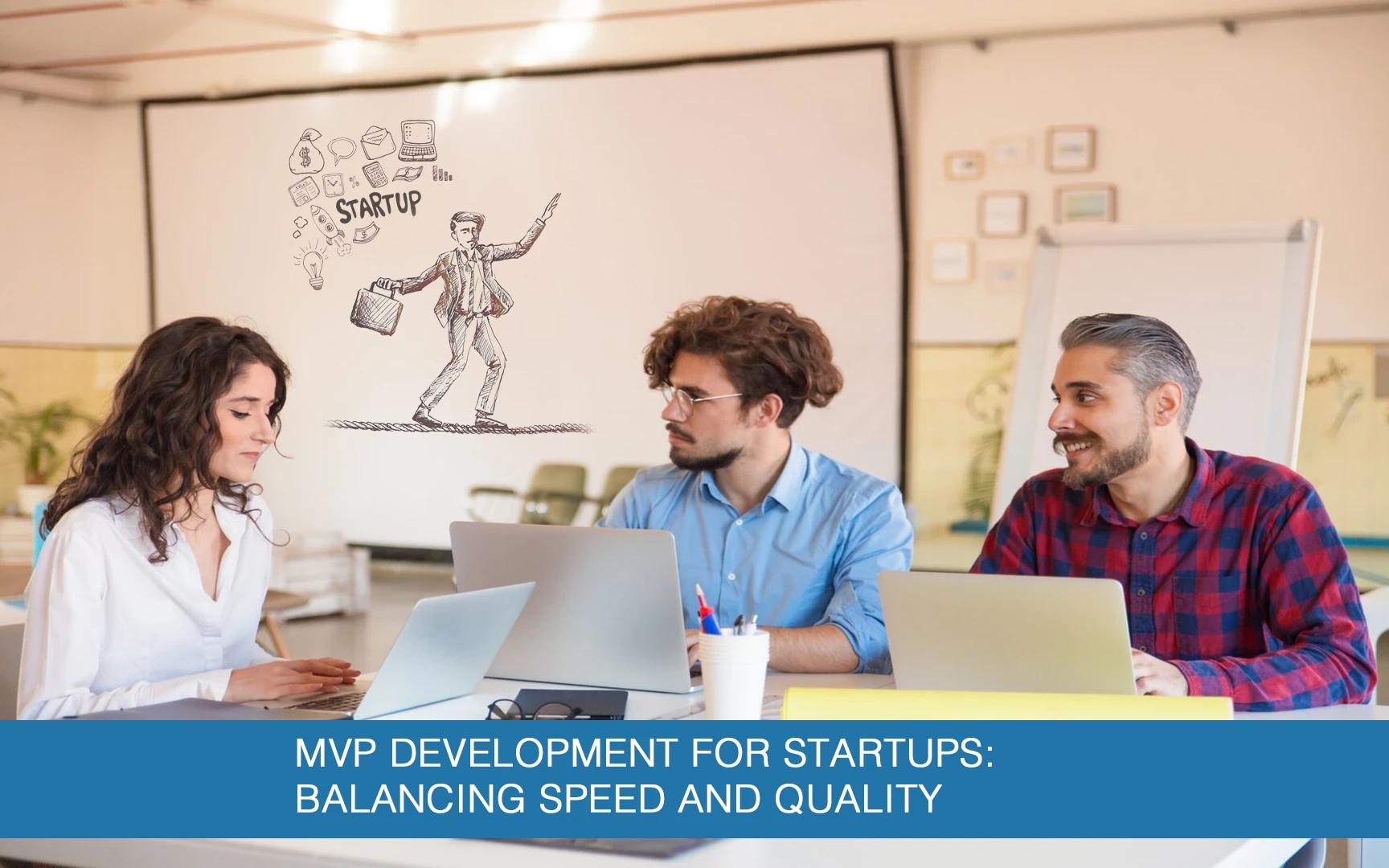In the fast-paced startup ecosystem, time is a luxury, and quality is non-negotiable. Minimum Viable Product (MVP) development emerges as a crucial strategy, enabling startups to test their ideas quickly while maintaining high standards. This article explores how startups can strike the perfect balance between development speed and product quality in their MVPs.
Understanding MVP and Its Importance for Startups
Definition of MVP: An MVP is the most basic version of a product that is viable and functional. It includes only essential features to satisfy early adopters and to provide feedback for future product development.
Significance for Startups: MVPs allow startups to validate their concepts with minimal resources, gather user feedback early, and adapt before making significant investments.
Strategies for Balancing Speed and Quality in MVP Development
Focus on Core Features: Identify and prioritize the core features that solve the primary problem your product addresses. Avoid overloading the MVP with features that can be developed later.
Lean Development Practices: Adopt agile methodologies that emphasize iterative development, regular feedback, and continuous improvement.
User-Centric Design: Ensure the MVP offers a positive user experience, even with limited features. Focus on usability and design that resonates with your target audience.
Rapid Prototyping and Testing: Use rapid prototyping tools to quickly bring your ideas to life. Engage in continuous testing to identify and fix issues promptly.
Utilizing Technology and Tools for Efficient MVP Development
Leverage Modern Development Tools: Utilize frameworks and tools that speed up development without compromising quality. Technologies like Flutter for mobile apps or rapid development platforms for web applications can be beneficial.
Automated Testing and Continuous Integration: Implement automated testing and continuous integration to maintain quality while speeding up development cycles.
Challenges in MVP Development and How to Overcome Them
Developing an MVP (Minimum Viable Product) is a critical step for startups, but it comes with its own set of challenges. Understanding these hurdles and knowing how to navigate them is essential for a successful MVP launch.
1. Resource Constraints:
Challenge: Startups often operate under tight budget and resource constraints. This limitation can impact the scope, quality, and timeline of the MVP development.
Solution: Focus on the most essential features that offer value to your users and align with your core business proposition. Utilize cost-effective tools and technologies that do not compromise on quality. Consider outsourcing or collaborating with external partners for specialized skills that are not available in-house.
2. Scope Creep:
Challenge: During the development process, there’s a tendency to keep adding features, known as ‘scope creep’. This can delay the launch and lead to an overcomplicated product.
Solution: Set clear goals and a well-defined scope for your MVP at the outset. Regularly review progress and resist the urge to add features that are not essential for the initial launch. Remember, the purpose of an MVP is to test the core concept; additional features can be developed based on user feedback post-launch.
3. Balancing Speed and Quality:
Challenge: Achieving a balance between rapid development and maintaining high standards of quality is one of the trickiest aspects of MVP development.
Solution: Adopt an Agile development methodology, which facilitates quick iterations based on regular feedback. Implement automated testing and continuous integration to ensure that quality is not compromised in the pursuit of speed.
4. Gathering and Implementing User Feedback:
Challenge: Collecting meaningful user feedback and integrating it into the development process can be challenging, especially when under time pressure.
Solution: Establish effective channels for collecting user feedback, such as surveys, focus groups, or beta testing. Prioritize feedback based on how it aligns with your business objectives and the needs of your target audience. Be agile in making adjustments to your MVP based on this feedback.
5. Market Fit and User Acceptance:
Challenge: Ensuring that the MVP resonates with the target market and gains user acceptance is a critical hurdle.
Solution: Conduct thorough market research before development to understand your audience’s needs and preferences. Build a user-centric MVP that addresses these needs. After launch, closely monitor user engagement and retention metrics to gauge market fit and make necessary adjustments.
6. Technical Debt:
Challenge: In the rush to release the MVP, startups might take shortcuts in coding, leading to what is known as ‘technical debt’, which can cause issues later on.
Solution: While some level of technical debt is inevitable in rapid development, it’s important to manage it effectively. Make conscious decisions about what to prioritize and document areas where compromises are made for future reference and refinement.
Conclusion
Balancing speed and quality in MVP development is crucial for startups to validate their ideas and set the foundation for future success. By focusing on core features, embracing agile practices, and leveraging the right tools, startups can develop MVPs that are both efficient and high-quality.
Are you a startup looking to develop an MVP that balances speed and quality? Contact Edgeware Global for expert guidance and support in bringing your innovative ideas to life quickly and effectively!
